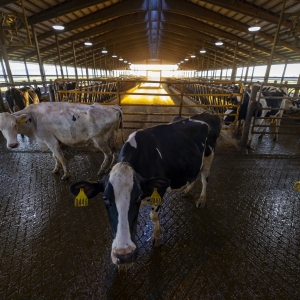Federal Water Tap, January 29: EPA Proposes Stricter Water Pollution Limits for Large Slaughterhouses
The Rundown
- EPA proposal would restrict nutrient pollution from the largest meat and poultry processors.
- EPA science advisers will not review the agency’s proposed rules for lead in drinking water.
- House Energy and Commerce subcommittee will hold a hearing on breaching Snake River dams.
- USAID considers a grant program for water, climate, and gender in Pakistan.
- National Weather Service updates its water data website.
And lastly, agency leaders ask utilities for water and energy data for apartment buildings.
“Making these data easily available for multifamily properties is critical to the ability of property owners participating in these programs to assess the need for energy upgrades and prioritize those upgrades which will have the greatest benefit to their residents.” – Letter from the heads of the Environmental Protection Agency, Department of Energy, and Department of Housing and Urban Development to utilities and state utilities commissions. The agency leaders want the owners of apartment buildings to have access to their building’s water and energy data. Billions in federal grants are now available for efficiency upgrades. Widespread availability of such data would help prioritize investments.
By the Numbers
$1.5 Million: Potential size of a USAID grant program on water, climate, and gender in Pakistan. The agency is seeking information on how it could structure such a program.
News Briefs
Slaughterhouse Rules
The EPA issued draft rules that would require the largest meat and poultry slaughterhouses to adopt new technologies that would reduce their water pollution.
Slaughterhouse wastewater is a significant industrial source of nitrogen and phosphorus, nutrients that contribute to harmful algal blooms in rivers and sicken people.
The proposed rules target both chemicals, but only the largest polluters will be affected. Under the draft proposal, only 21 percent of all facilities will be subject to the new rules.
The EPA reckons that 3,879 meat and poultry facilities nationwide discharge wastewater into waterways. Some do so directly through a pipe. But most contribute pollution indirectly, via public wastewater treatment plants.
The EPA could consider stronger options. The agency wants input on requiring pretreatment for indirect dischargers; on chloride limits; and on E. coli limits for direct dischargers. But those are not part of the agency’s preferred option.
Green groups decried the free pass that many slaughterhouses would receive.
Public comments are being accepted through March 25. Submit them via www.regulations.gov using docket number EPA–HQ–OW–2021–0736.
No Review of Lead and Copper Rule Changes
The Science Advisory Board, which advises the EPA on the science that underlies its policies, will not review the agency’s proposed changes to rules regarding lead in drinking water.
The board noted that it had provided advice in 2020, on a related rulemaking. It also said the latest update does not incorporate any new scientific approaches.
Studies and Reports
New NWS Water Data Website
The National Weather Service released a new website to improve the delivery of water data.
The website, called the National Water Prediction Service and available today in preview mode, will be a storehouse for information on river level forecasts, flood inundation, precipitation, and other items. It will be fully functional this spring.
On the Radar
Snake River Dams Hearing
On January 30, a House Energy and Commerce subcommittee will hold a hearing on breaching Snake River dams to restore salmon and lamprey habitat. The Republican-led committee will focus instead on how it might affect the status quo.
Slaughterhouse Rules Public Meeting
On January 31, the EPA will host an in-person meeting to gather comments on its proposed changes to water pollution rules for slaughterhouses.
To comment at the hearing, register before 4:00 p.m. January 29.
Glen Canyon Dam Meeting
The advisory group for managing Glen Canyon Dam will hold a public meeting on February 28-29. The meeting will have both virtual and in-person options.
The agenda: 2024 Colorado River basin outlook, potential experiments in 2024, status of endangered and threatened species, and a budget update.
Federal Water Tap is a weekly digest spotting trends in U.S. government water policy. To get more water news, follow Circle of Blue on Twitter and sign up for our newsletter.
Brett writes about agriculture, energy, infrastructure, and the politics and economics of water in the United States. He also writes the Federal Water Tap, Circle of Blue’s weekly digest of U.S. government water news. He is the winner of two Society of Environmental Journalists reporting awards, one of the top honors in American environmental journalism: first place for explanatory reporting for a series on septic system pollution in the United States(2016) and third place for beat reporting in a small market (2014). He received the Sierra Club’s Distinguished Service Award in 2018. Brett lives in Seattle, where he hikes the mountains and bakes pies. Contact Brett Walton







Leave a Reply
Want to join the discussion?Feel free to contribute!